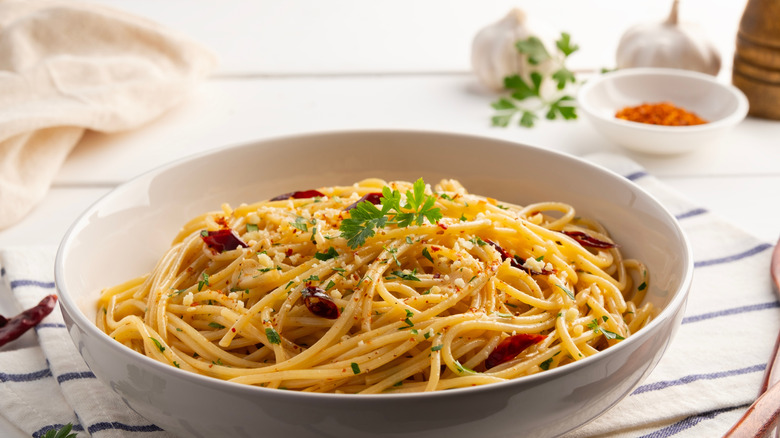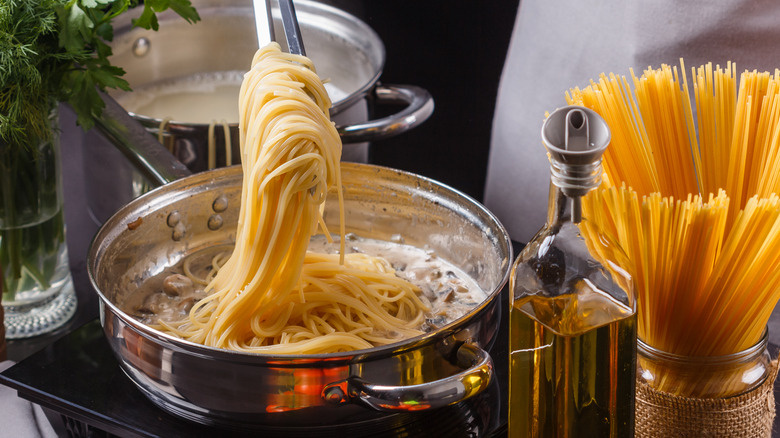3-Ingredient Aglio E Olio Is Answer For Those Nights You Just Don't Want To Cook At All
As is evidenced by dishes such as classic bucatini cacio e pepe and spaghetti carbonara, sometimes the best pasta recipes are also the simplest. All too often, dinnertime catches us exhausted, uninspired, and unprepared, but one of the secrets to a simple pasta dish is that if there's good olive oil, garlic, and crushed red pepper flakes in the pantry, you're only noodles away from a memorable meal.
Aglio e olio, or "garlic and oil," is said to originate in Naples, but the dish features on dinner tables all across Italy. Often called a pantry recipe, aglio e olio is one of those incredibly easy and affordable dishes you can whip up on the fly, whether you need a quick lunch, a speedy dinner, or a tempting late-night snack.
The secret to spaghetti aglio e olio
Olive oil, garlic, and red pepper flakes don't usually come together to make the luxuriously creamy sauce characteristic of aglio e olio, but the secret lies in the pasta water. While sliced garlic and pepper flakes gently toast in the olive oil, the spaghetti (linguine, bucatini, or even fettuccine) should be bubbling away in just enough well-salted water to allow movement.
Using the starchy pasta water is essential for creating the creamy, delicious sauce. The starch acts as an emulsifier, helping to combine the water and oil. The result is a sauce with a smooth, cohesive texture that isn't the least bit oily. The more concentrated your starchy water, the better the emulsion and the creamier your sauce. That's why you cook so much pasta in so little water.
When it's close to al dente, finish cooking your pasta in the pan with the toasted garlic olive oil and a half cup of the extra-starchy pasta water, tossing it continuously to stabilize and emulsify it with the oil. Of course, there's one more ingredient that could make this dish even better if you've got it on hand — some shaved Parmesan.

